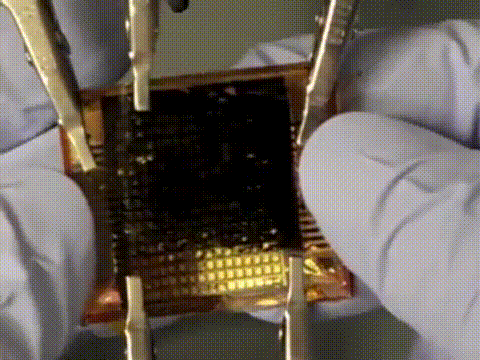Electronic 'Skin' Responds to Your Fingertips

Image credit: UC Berkeley
Bendable sensors and displays have made the tech rounds before, but a team of engineers at the University of California-Berkeley have found a way to combine the two.
Ali Javey and his lab have successfully created e-skin, a pressure-sensitive circuit array that is thin, flexible, and luminescent. His research can be found in the journal Nature Materials.
"It's called skin, but the material is for more than just prosthetic limbs," said Javey, a professor of electrical engineering and computer science at the university.
He sees the human body's skin as a thin and stretchable substance that relays all types of information like touch and temperature.
"It provides us with the ability to interface with the environment," he told ABC News. " That's skin."
Each circuit in the e-skin is made up of three parts: a pressure sensor, a transistor, and a pixel-sized organic LED. Chuan Wang, the lead author of the paper and an assistant professor of Electrical and Computer Engineering at Michigan State University, said that the LED's brightness responds directly to touch.
"Applying pressure changes the resistance of the sensor and that modulates the current flowing through the pixel," he said.
E-skin is currently made in a clean room similar to how some computer chips are manufactured. Eventually, Wang said, the process could move out of the clean room and onto printers.
"It'd be like when you buy a piece of cloth and you cut the size that you need," he said.
According to Javey, the thin film sensors will eventually be able to turn any flat surface into its own computer.
"You used to have these big bulky boxes, but electronics are becoming thinner and thinner," he said. The circuits will be able to be more complex and do more increasingly complicated tasks. "It's going to be a self-contained system."
That doesn't mean that the human body is off limits. Wang said that future versions of the circuit could be wrapped around a person's arm like a bandage to monitor his or her health. In addition, he sees one big potential for e-skin.
"Of course it can be used in robotics," he said.